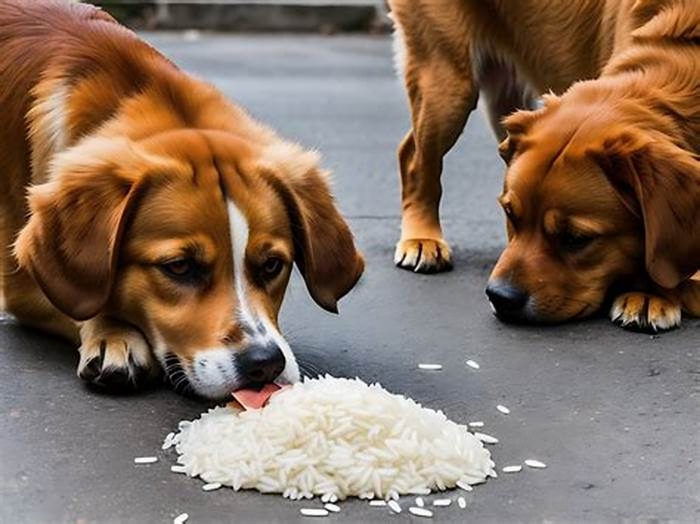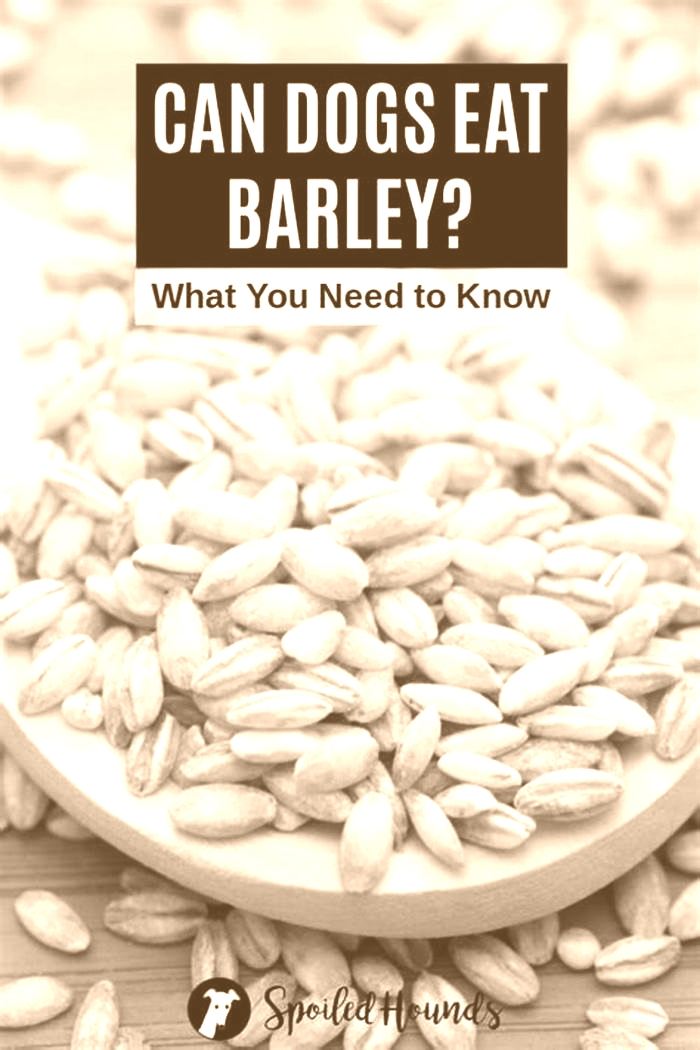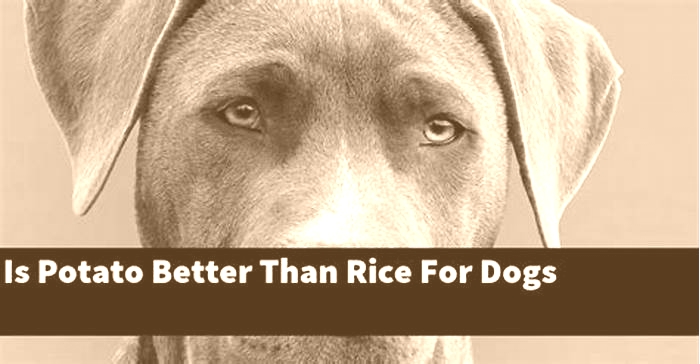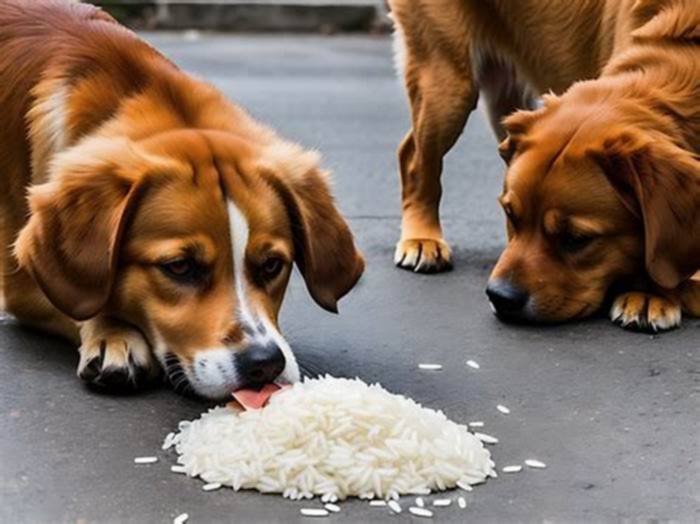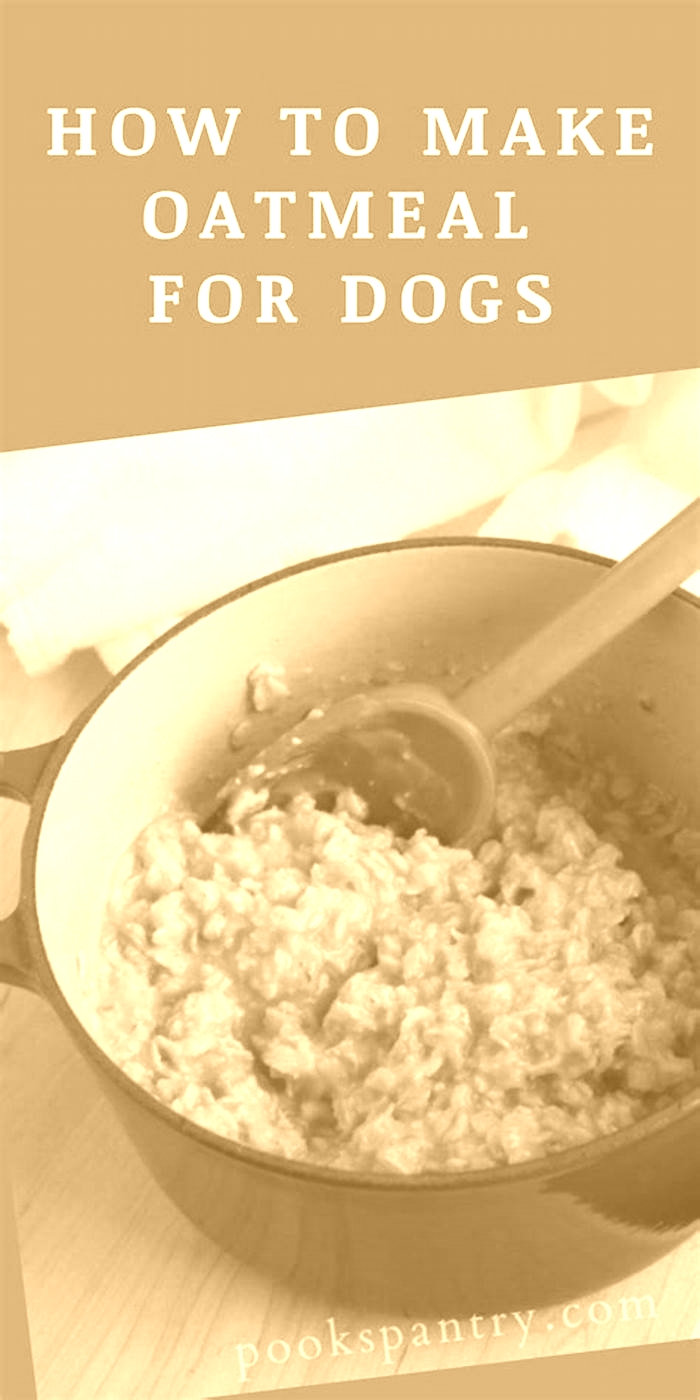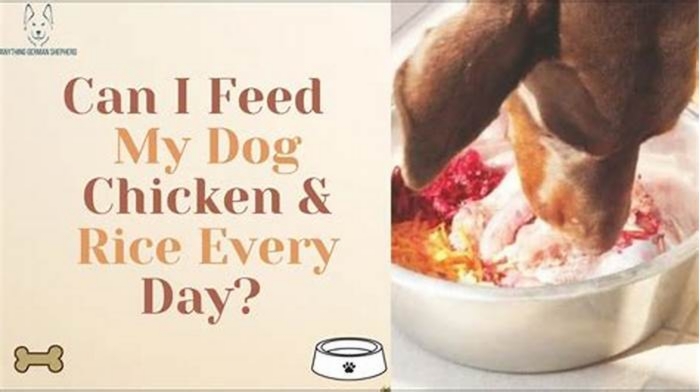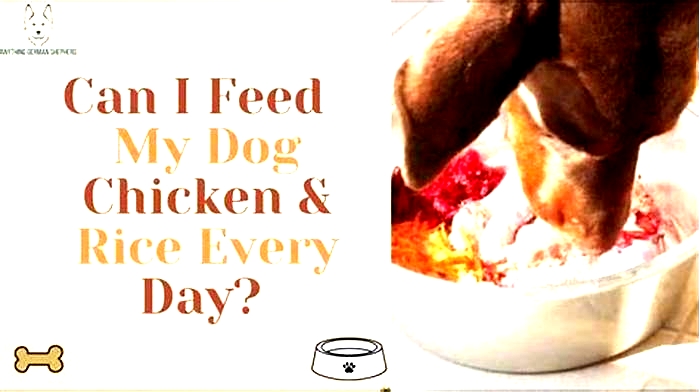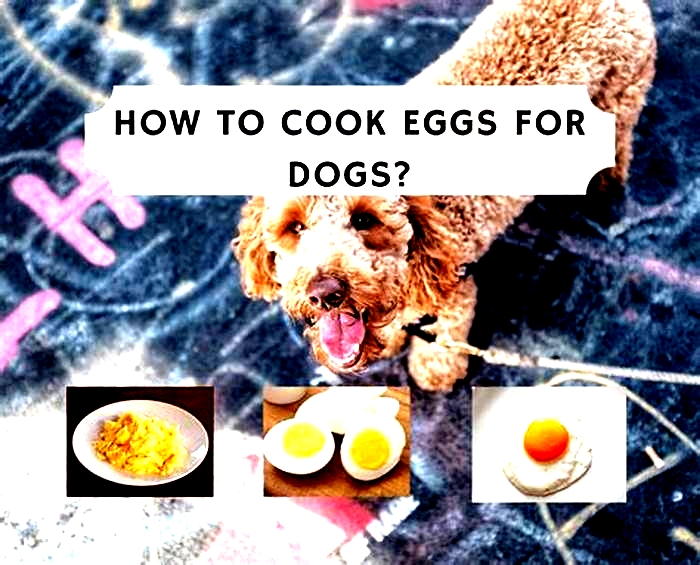Is rice good for dogs
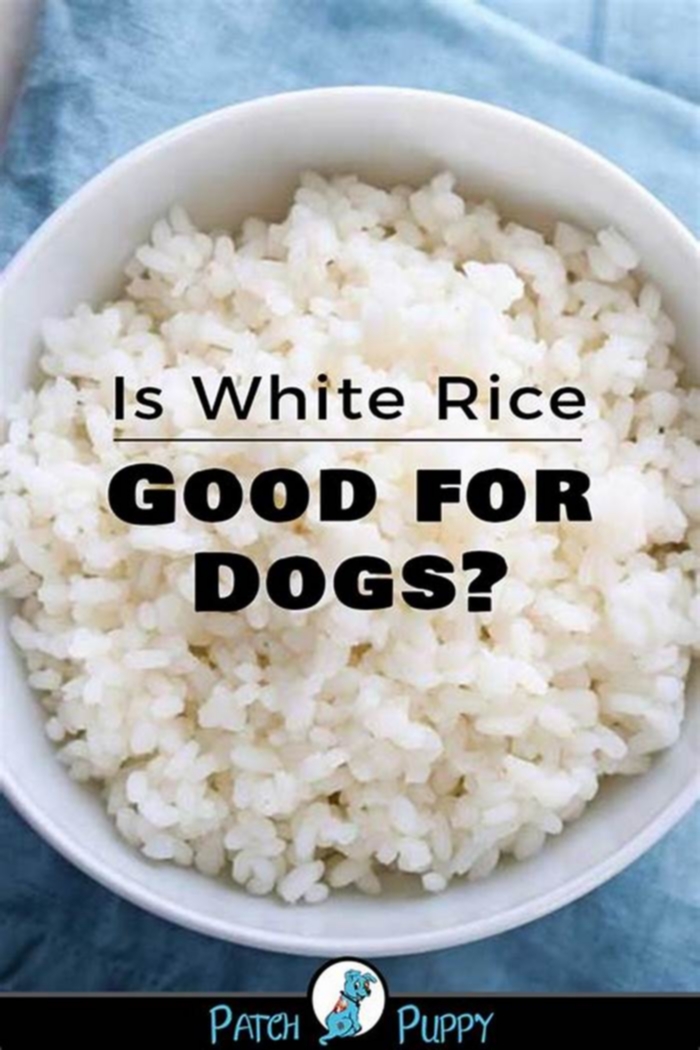
Is Rice Good for Dogs
Common questions posed to veterinary and nutrition specialists often are, Can dogs have rice? or Is rice safe for dogs to eat? The answer to these questions is a resounding yes. What might surprise many is that rice is a component often included in dog food. Ever since pet food was first sold commercially, rice has been a staple ingredient.
In fact, if you ask many dog lovers what theyfeed their dog when its sick, theyll possibly tell you white rice is a part of their dogs diet. White rice is a good option for a dogs upset stomach because its quick to prepare, easy to digest, and low in fiber.
Moreover, it can also help bind the stool in cases of diarrhea. Read on to learn more about the benefits of rice for dogs, find out more about your dog eating rice.
Benefits of Rice for Dogs
Rice has been a staple food for more than half of the population around the world. So, is rice ok for dogs? Is rice safe for dogs? The answer is an enthusiastic yes. Rice is rich in carbohydrates, fiber, and protein.
Energy comes from the fat, protein, and carbohydrates eaten by your dog. Rice is also a great source of iron and vitamin D for your dog. Vitamin D aids in regulating phosphorus and calcium levels, whereas iron helps in the formation of the molecule in red blood cells that carries oxygen called hemoglobin.
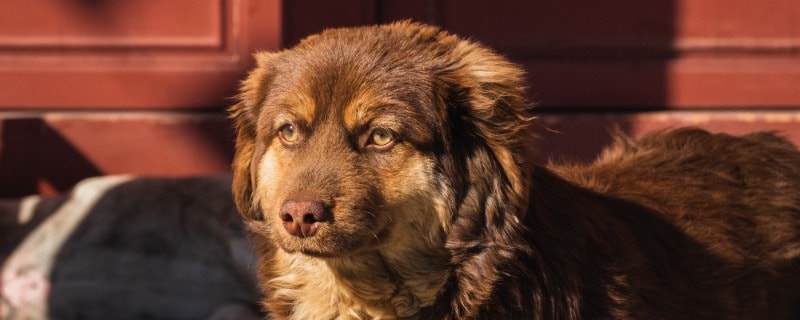
If your dog is sensitive to gluten, then rice is a great choice for him as well since rice delivers essential carbohydrates without gluten. Because of these nutritional benefits, pet owners use rice in some of their recipes mixed with particular ingredients to create a balanced meal for their dogs.
Now you might be wondering, is brown rice good for dogs? Yes, it is. In fact, brown rice is a great source of B vitamins, minerals, and easily digestible carbohydrates. Due to how it is processed, brown rice is more nutritionally dense than white rice. Its actually higher in fiber, antioxidants, and protein, and lower in starch than white rice. However, because of its coarser texture, some dogs may have difficulty eating it.
How about white rice? Is white rice good for dogs? Again, the answer is a resounding yes. Unlike brown rice, white rice is lower in fiber but slightly higher in carbohydrates and calories due to the absence of the husk. Its easily digestible and chewable, making it a good choice for dogs having GI distress [1].
 When a dog is experiencing diarrhea, vets sometimes recommend plain white rice mixed with chicken.The starch and fiber in white ricehelp calm the gut and bind the stool. Though, compared to brown rice, white rice has a higher glycemic index which may cause a dogs blood sugar levels to rise and fall.
When a dog is experiencing diarrhea, vets sometimes recommend plain white rice mixed with chicken.The starch and fiber in white ricehelp calm the gut and bind the stool. Though, compared to brown rice, white rice has a higher glycemic index which may cause a dogs blood sugar levels to rise and fall.
Is rice bad for dogs, you ask? No, its not. In contrast to dogs wild ancestors, domestic dogs have evolved into omnivores. That means dogs can eat and digest plant foods.
They actually require vastly different vitamins and minerals than their wild ancestors. In addition, there is simply no scientific evidence that grains are toxic to dogs or cats. The vast majority of dogs do just fine on a diet that contains grains or rice. In fact, grains are well tolerated by a dog.
How To Prepare Rice for Your Dog?
Whether you opt for white rice or brown rice for dogs, you will need four cups of water for one cup of uncooked rice. Wash any excess starch off the uncooked rice. You can add the rice to a sifter with holes where the rice wont fall through. Run it under cool water until the water turns clear. Once its cleaned, add the rice and the water to a pot and let it boil on the stove for 20-30 minutes.Once its done, allow it to cool first before taking a segment out to mix with your pets food. Keep in mind, when it comes to cooking rice for your dog, the rice should be steamed in plain water only, and avoid using any spices or seasonings.
Frequently Asked Questions
How Much Rice Should A Dog Eat?
Grains are nutritious, but they also contain calories. Therefore, the calories from rice need to make up no more than 10 percent of your dogs daily caloric consumption. Feeding your dog small portions of rice will help prevent him from gaining extra pounds.
What do you do if your dog doesnt poop for 3 days?
If your dog doesnt poop for 3 days, you need to visit a vet immediately. A dog that is forced to go without pooping for three days can be diagnosed with stones or even clogged unedible items. In such a case, the sooner you show concern and care, the easier it is to get things under control.
Which Is Better For Dogs, White Or Brown Rice?
Both brown rice and white rice are good for dogs. Brown rice has a brown color because it still has the bran and hull parts of the grain or the outer layers than white rice does. That means it retains natural oils and its more fibrous than white rice. However, it can also spoil faster when its stored.
Thus, if youre choosing between the two, be mindful of how quickly you plan to serve the rice to your pet. This can help you decide which one to prepare.
What Human Food Can Dogs Eat?
Dogs can also enjoy the right sort of occasional treats. Its fine to supplement a dogs diet with small amounts of some human foods.
Some of the people foods that will help boost the nutrition of a dog are peanut butter (high in protein, but high in calories), popcorn (contains potassium), pineapple (with calcium), liver (small quantities of liver contains many nutrients), lean meat (chicken, beef, or pork meat, has B-vitamins) as well as squash (great source of beta carotene or Vitamin A).
Conclusion
There you have it! We hope we helped you answer the, can dogs eat rice? question and other common queries about giving your dog rice. As you can see, not only can they eat rice, dogs can also benefit from it as an extra treat or as part of their balanced diet.
They can actually be added to almost any other dog food to better infuse it with healthy nutrients. Dog owners should ask their vet about their suggestion on quality dog food to make sure their dog has a healthy, well-balanced meal.
Better yet, to learn more about how a dog can benefit from rice, how to incorporate rice in a pets diet, and what to believe about the grain-free pet movement, consult a veterinary nutritionist or your vet for information.
Can Dogs Eat Rice Safely?
If your dogs begging for food while youre eating some rice, you might wonder if its OK to give him some.
Dogs can eat plain, cooked rice in small quantities, and it actually has some health benefits for your pup, too.
We spoke to Dr. Michelle Burch, a veterinarian with Paramount Pet Health, and Dr. Corinne Wigfall, a veterinarian spokesperson for SpiritDog Training, to find out the answer to the question: Can dogs eat rice?
Can dogs eat rice safely?
Rice is totally fine for most dogs to eat, and its actually an ingredient in most dog foods.
Dogs are omnivores, which means they need to have meat and vegetables in their diet and are able to digest most carbohydrates, such as rice.
White rice is also often fed to dogs as a bland meal to settle an upset stomach since it doesnt have a lot of fiber and is easy to digest.
Cooked plain rice is very helpful for dogs who are having tummy upsets and showing signs like vomiting or diarrhea for a few days, Dr. Wigfall told The Dodo. Rice is an easily digestible carbohydrate source, and its often much easier for the body to digest and use the energy from this particular food group, [carbs].
You can also give your pup a little plain rice as a treat, too. But keep in mind rice shouldnt make up a large part of your dogs diet since it doesnt have all the nutrients dogs need.
Is rice healthy for dogs?
Even though you might not think of rice as being super nutritious, it actually has some health benefits, even for dogs (which is why its included in so many dog foods).
White and brown rice are a good source of carbohydrates, vitamin D and B, calcium, iron, and riboflavin, Dr. Burch told The Dodo. Brown rice is a good source of fiber compared to white.
Brown rice is healthier for dogs than white rice is (just like for people) because it contains more nutrients, but some dogs might have more trouble digesting it.
Brown rice can be difficult for some dogs to digest and may cause gastrointestinal problems, Dr. Burch said.
White rice has a higher glycemic index than brown rice, which means it raises your dogs blood sugar levels more, so it isnt a good snack for pups who have diabetes. You also shouldnt feed rice to an overweight or obese dog because eating too much can make your dog gain weight due to the amount of carbs.
Rice allergy in dogs
According to Dr. Wigfall, rice allergies in dogs are pretty uncommon.
If your dog does have a rice allergy, you might notice symptoms such as vomiting, diarrhea, weight loss and skin irritation.
[Gastrointestinal] signs can be seen with or without skin irritation: scratching at the skin, red patches, hair loss, smelly ears, or scabs and crusts on the surface of the skin, Dr. Wigfall said. If you think your dog is allergic to rice in particular, it's worth having this tested with a veterinary dermatologist to confirm the diagnosis, as so many foods we feed dogs contain some elements of rice.
If your pups definitely allergic to rice, your vet can recommend a dog food thats OK for him to eat that doesnt include it. They might have you start your pup on a hypoallergenic dog food.
Dogs with rice allergies can utilize potatoes, oats or tapioca as a carbohydrate source, Dr. Burch said.
Be sure to confirm with your vet that your dog has a rice allergy before switching him to grain-free food because foods that dont include grains have been linked to dogs developing dilated cardiomyopathy, and most dogs should have grains as a part of their diet.
How to feed your dog rice
You can give your pup plain, boiled rice with no seasonings or butter. Treats should only make up around 10 percent of your dogs caloric intake, and rice is included in that if youre giving it to him as a snack, so just give him a little bit.
If youre feeding your dog rice for an upset stomach, you can try giving him plain, boiled chicken with it to add some protein and nutrients, Dr. Wigfall said. Feeding rice for tummy upset is a short-term solution, and if no improvement is seen within one to two days, veterinary advice should be sought, Dr. Wigfall said.
Rice can also be used as an ingredient in homemade dog foods or treats if you like to cook for your pup.
Rice can be fed as a treat or combined with protein and vegetables to create a well-balanced homemade diet, Dr. Burch said. Ensure to obtain homemade diets from a reliable source, such as your veterinarian or a veterinary nutritionist, as not all recipes are balanced or complete, leading to health problems.
And definitely dont give your dog fried rice. Fried rice has extra fat and salt, and it can contain ingredients that are poisonous to dogs, like onion.
Be sure to talk to your vet to find out how much rice is OK for your dog to eat or if you think he might be allergic to rice. In most cases, though, a little plain, cooked rice every so often is a perfectly safe and even healthy snack for most pups.
Can Dogs Eat Rice?
Rice is one of the most popular food crops with over half the world eating it daily. However, you might be wondering if its healthy or even safe for dogs to eat rice given all the low-carbohydrate diet trends on the market. Luckily, rice is not bad for dogs and its often found as an ingredient in many specialty dog foods. Rice is even safe for puppies to eat in moderation. For healthy dogs, brown or wild rice is preferred over white rice because it contains more nutrients and fiber. You should not give your dogs uncooked rice. To help you, weve compiled this guide on the reasons dogs can eat rice safely.

Is Rice Good For Dogs?
Dogs can eat rice and its often found as an ingredient in organic or vegan dog food. Rice is a great alternative to low nutrient fillers used in commercial pet food. Most of the cheaper commercial pet food is loaded with fillers that you wouldnt want to put in your own body.
While dogs can have rice every day, it is a high-calorie food so you should only give it your canine companions in moderation. Rice should not exceed 10% of your dogs daily caloric intake.

Not all rice is created equal. For example, brown rice is a whole grain that contains more nutrition than white rice. In fact, all white rice started off as brown rice but was processed to have its husk, bran, and germ removed. This substantially increased its shelf life but many essential nutrients were lost in the process. To help offset some of this loss, white rice is artificially fortified with nutrients.
Despite its name, wild rice is not actually rice at all. It comes from a species of grass that produces seeds that are similar to rice. Wild rice was grown and harvested by Native Americans and 3 out of the 4 strains of wild rice are native to North America.
Rice can be good for dogs to eat when prepared properly and the right type is served. Brown or wild rice is generally recommended over white rice for healthy dogs. White rice is easier to digest so it is preferred for dogs with a history of gastrointestinal problems.

Health Benefits of Rice For Dogs
There are several key health benefits that rice provides. Rice is high in carbohydrates, a valuable source of energy, with very little sodium, cholesterol, or harmful fats. Rice is also rich in vitamins and minerals, including vitamin D, iron, fiber, niacin, riboflavin, and thiamine. Furthermore, the starch in rice helps keep your dogs bowels healthy, and since rice is low in sodium, it is ideal for dogs that have heart issues. Brown or wild rice is the best option as they are not processed.
Compared to white rice, brown rice is higher in calories but also provides more protein, dietary fiber, fatty acids, manganese, selenium, and magnesium. However, white rice has more folate and is easier to digest. In fact, white rice is sometimes recommended to help treat diarrhea in dogs because its high in starch.

Adding Rice To Your Dogs Diet
The easiest way to add rice to your dogs diets is to mix rice with their dry or wet dog food. However, many dog owners are making their own pet food at home, from scratch, using rice as one of the main ingredients. You can cook meals for your dog using rice, sweet potato, lean meat, broccoli, and carrots.
For larger dogs, you can simply cook all your ingredients, mix them together, and give them to your dogs in their bowls. However, for smaller dogs, its a good idea to mince everything together with a food processor or blender to help eliminate any potential choking hazards.

If you choose to cook your dogs meals, its important to remember to leave out salt, oil, and other seasonings that youd normally add when cooking food for yourself. Common spices or ingredients like garlic, nutmeg, butter, or onions are bad for dogs to eat and can even be toxic for them.
Yes, Dogs Can Eat Rice
Rice is safe for your dogs to eat and many dog food brands include it as an ingredient. In fact, rice has more nutrients than products that use fillers. Some pet stores may also carry raw food, which is similar to dog food that you would make yourself. Raw food is made with healthy ingredients and the nutritional facts only include ingredients that you should have no trouble pronouncing, such as rice. Feeding your dogs food that contains healthy ingredients is the first step towards having happier pups!

